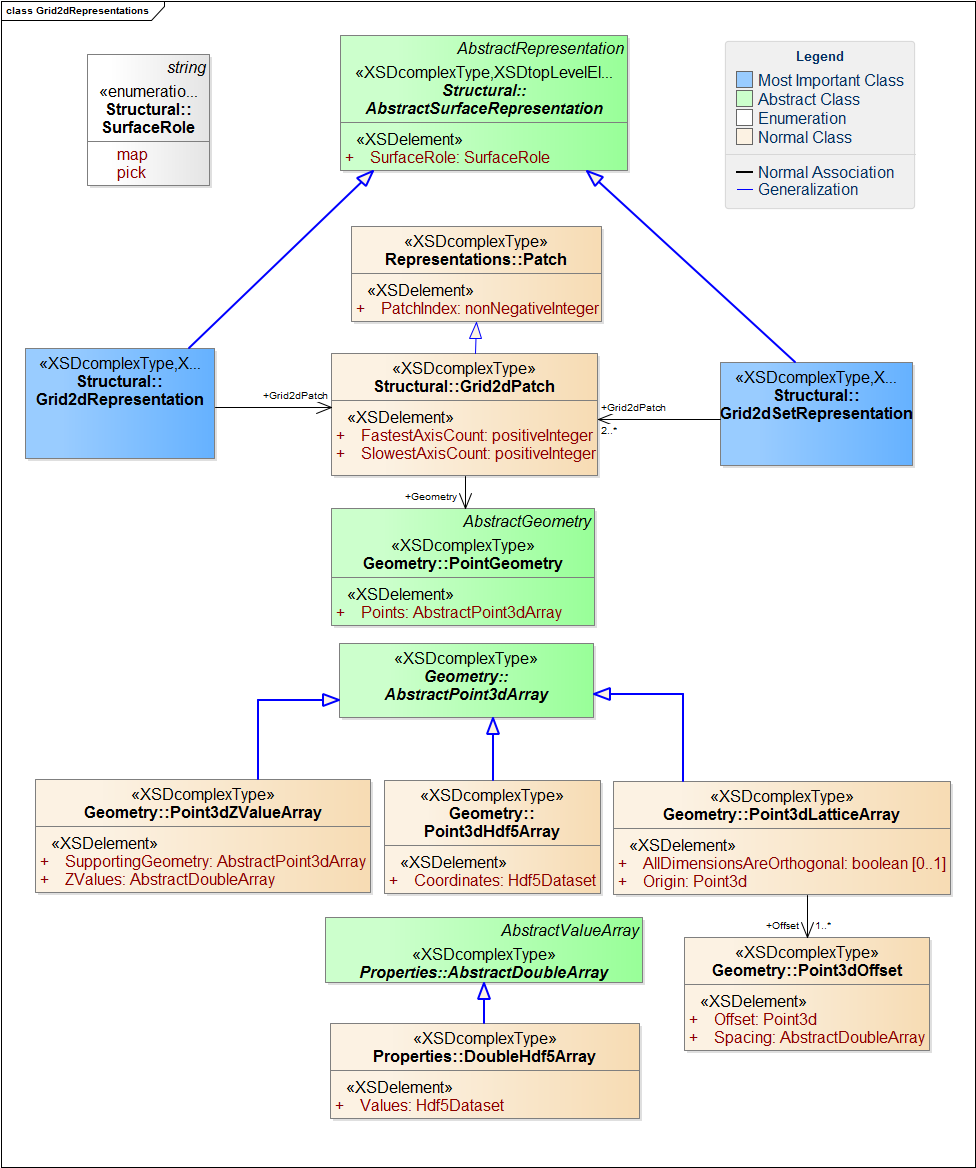10.2.4.2 Grid 2D Representation and Grid 2D Set Representation
| Topic Version | 1 | Published | 09/11/2015 | |
| For Standard | RESQML v2.0.1 | |||
Figure 10.2.4.2-1 shows the UML model for both of these representations, which are explained below.

A grid 2D representation is composed of only one patch located on one lattice (defined for 2 dimensions; for more information on lattices, see 10.2.4.3 How to Use a Point3D Lattice to Complement the Geometry of a 2D Grid Representation ). The grid 2D set representation is composed of several patches, which correspond to one unique representation for which the different patches can be located by diverse lattices.
The geometry can be accessible three ways:
- If no point lattice is provided, geometry is directly accessible on a completely defined array of explicit X,Y,Z 3D points (point 3D HDF5 array).
For an array of X,Y,Z 3D points without a lattice, an explicit HDF5 dataset is used. The number of points is implicit, given by the dimension of the HDF5 dataset.
- Indirectly accessible because the geometry can be obtained by the association between an array of Z values of 3D points (Point3DValues) plus a (2D) point lattice defined as the “supporting geometry” on these Z values.
For an array of Z values of 3D points (Point3DValues) and a lattice, the nodes are aligned in only one 2D array of 3D points:
- To explore the array of Z values corresponding to these patches (one for grid 2D representation, several for grid 2D set representation), the fastest axis corresponds to the number of nodes in the second direction (N2), with index I2, and the slowest axis corresponds to the number of nodes in the first direction (N1), with index I1. The data order follows the index order: I1 + I2*N1.
- In this case, the topology association of the nodes is implicit (each I,J point is connected to I-1,J-1; I+1,J+1; I-1,J+1; I+1,J-1) and uses a 1D index, with values from 0 to N1*N2-1 for a structured 2D grid.
- If a 3D point lattice (with explicit X,Y,Z location of each point) is given, the geometry is directly accessible.